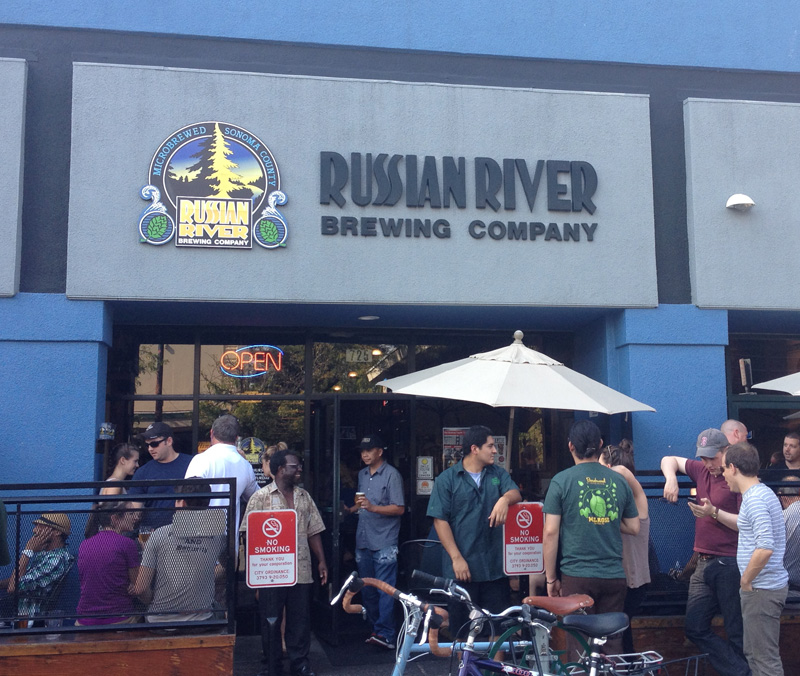Pliny the Younger and the Birth of ‘Cult Pours’
The first pour every February of the Russian River Brewing Co.’s Pliny the Younger had been reliably popular since the inaugural one in 2005. Something about the 2010 debut seemed different, however.
Perhaps it was because the triple IPA from the Santa Rosa, CA-based brewery and brewpub had scored a perfect 100 rating on both BeerAdvocate and RateBeer during the previous year. Or maybe because, just days earlier, it had also won the People’s Choice Award at the 10th annual Double IPA Festival at the Bistro eatery in nearby Hayward.
Still, on this particular first Friday in February, Russian River prepared for the Pliny the Younger pour as if it were any other: the beginning of a gradual sellout of a sought-after beer.
Then the line started about 6 a.m.
It snaked its smartphone-pecking way along Fourth Street in downtown Santa Rosa, those in the queue alerting those who wanted to join. The weather, in that typically San Francisco Bay Area way, was temperate despite the winter date: 50 degrees by 11 a.m. beneath partly sunny skies, nary a breeze to disturb a waiting hair.
The line swelled; the brewpub opened.
It became quickly clear that this was no routine Pliny the Younger pour. Russian River husband-and-wife proprietors Vinnie and Natalie Cilurzo found themselves enlisting every soul they could to fill glasses and growlers, including people who did not work at the brewpub. Friends of the Cilurzos from Kern River Brewing in Kernville, in town to sip the samples, found themselves pouring them instead. The Friday passed in a blur.
Within eight hours, Russian River sold its entire supply of Pliny the Younger—20 barrels, or about 40 kegs, a supply that had every previous year taken at least two months to run dry. The brewery the next year forbade growlers and had more staff on hand.
Thus “cult pours” in American beer were born. Cult pours are those releases, whether draft or packaged, that draw fanatical devotion from consumers, either because they are released so rarely or because they are simply that good in the eyes of those who seek them. They sell out fast, garner media coverage, and bathe in online raves.
To be sure, there had been, probably for centuries, beers that people were willing to leap through hoops for before cult pours came along. But they were different. They came often from smaller breweries and brewpubs; they stood out, for whatever reasons, from an increasingly crowded field; and, at least at first, they flowed through word of mouth or at least industry-specific social media. No advertising or mass media for these. You usually had (and have) to be in the know.
These cult pours, too, have spawned an often Web-facilitated trade in the beers in order to erase the challenge of geography. The seeming necessity of having them has also mothered some interesting inventions: A favorite example is the bar in Portland, OR, that in February 2014 labeled its keg of Pliny the Younger as “Miller High Life.” The tell for those with a certain kind of thirst? The $7-for-12-ounces price tag.
Good luck this year.
Read more Acitelli on History posts.
Tom Acitelli is the author of The Audacity of Hops: The History of America’s Craft Beer Revolution. Reach him on Twitter @tomacitelli.


Leave a Reply